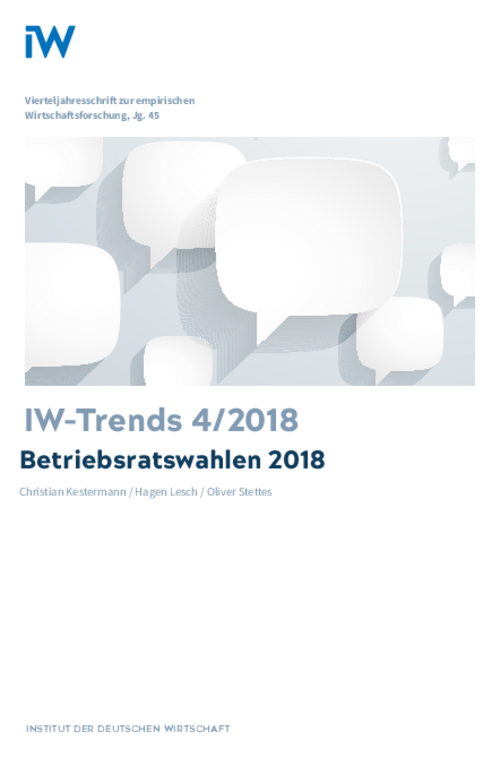Works councils traditionally have strong support among the workforces they represent. This is shown by the turnout in the 2018 works council elections, as established by a company survey conducted by the German Economic Institute (IW).

Works Council Elections 2018: Results of the IW Works Council Election Survey

Works councils traditionally have strong support among the workforces they represent. This is shown by the turnout in the 2018 works council elections, as established by a company survey conducted by the German Economic Institute (IW).
When works council elections were held, three quarters of those employees eligible to vote did so. Voter turnout was even higher in small and medium-sized enterprises. At 26 per cent, the proportion of women among works council members corresponds to the proportion of women entitled to vote. However, the chairperson of the works council is relatively seldom a woman (18 per cent) and women are significantly underrepresented among employee representatives in around one fifth of companies. As with managerial positions, this could be due to a disproportionately low proportion of female candidates. The majority of works councils are unionised, with works councils in manufacturing industry being a traditional trade union stronghold. The same applies to the position of works council chair, which – relative to the number of union members on the council – is disproportionately often occupied by a trade union member. In many places, the number of council members with a full-time release from work deviates either upwards or downwards from the statutory requirements, indicating a stable and trusting relationship between the management and their workforces. However, further analyses show that strongly unionised works councils are much less likely to forego this right of release than bodies on which trade union members hold fewer seats.
.

Works Council Elections 2018: Results of the IW Works Council Election Survey

More on the topic

Forms of Employee Participation and Conflict Management in the Workplace
An analysis based on the IW Personnel Panel showed which topics of conflict emerged in the workplace and how these conflicts were resolved. According to this data from 2022 works councils were present in 11 per cent of all companies.
IW
Works Council Elections 2022: Results of the IW Works Council Election Survey
Works councils receive strong backing from the workforces they represent. Nevertheless, the drop in turnout reported in the IW Works Council Election Survey 2022 suggests that this support is declining.
IW